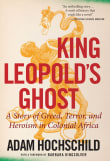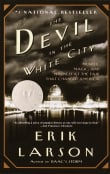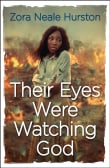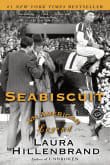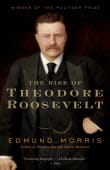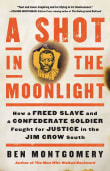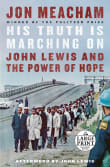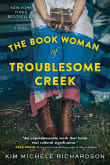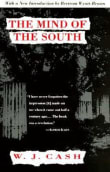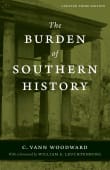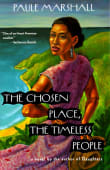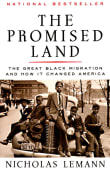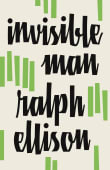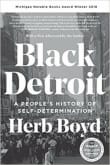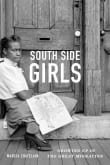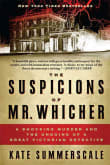The Warmth of Other Suns
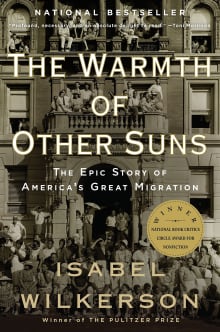
Book description
NATIONAL BOOK CRITICS CIRCLE AWARD WINNER • NEW YORK TIMES BESTSELLER • In this beautifully written masterwork, the Pulitzer Prize–winnner and bestselling author of Caste chronicles one of the great untold stories of American history: the decades-long migration of black citizens who fled the South for northern and western cities,…
Why read it?
20 authors picked The Warmth of Other Suns as one of their favorite books. Why do they recommend it?

This well-researched account of this poorly understood era in U.S. history drew me in with the personal stories of the individuals within the great exodus of African-Americans from the Jim Crow South. Witnessing the daily threats, insults, and indignities the migrants experienced in their birth places opened my eyes as never before to the myriad ways that race based assumptions and rules structured life and stifled aspirations. Relying on thousands of interviews, and focusing on the experiences of three individuals, Wilkerson paints such a realistic picture of their journeys that I felt the nerve wracking secrecy in which they planned…

It’s hard to know quite where to begin with this book–there is so much to love.
This book tells the story of the Great Migration of African American people out of the South across the United States to Chicago, New York, California, and beyond; it transforms and fills in a crucial part of American history that every American should know to understand our present day. But for me, what I love most starts with the way Isabel Wilkerson cares for people’s stories.
Wilkerson tells this decades-long, sweeping, under-told story through individual stories that are so detailed and compelling, so thoroughly…
From Gabrielle's list on struggles through the stories of real people.

I finished this book with the feeling that I had walked the roads and ridden the rails of the great migration of Black Americans out of the South in the decades after World War I.
I grew up as a white kid in the suburbs of Detroit, a city profoundly shaped by that migration. Yet I had never really understood that history—and certainly never felt it deeply—until I got to know Wilkerson's remarkable main characters: three real people who represented the stories of millions.
From James' list on bring real people of the past back to life.

This book captured me from its first pages, a history that reads like a novel. “They fled as if under a spell or a high fever,” Isabel Wilkerson writes, explaining the exodus from the South by oppressed African Americans.
As a writer, she drew me in by focusing on three people she came to know, who comprise the main story, providing an intimate window into the epic event. And didn’t they meet resistance and white supremacy in the North, too? Sadly, of course. I knew little about the Great Migration before and yet had learned much about the Harlem Renaissance,…
From Julie's list on building compassion around issues of race.

This book made me shift my understanding of the great migration of Black Americans from the South to the North as a mass refugee movement. People fled violence, terrorism, and political corruption, seeking safety and the hope of a future.
I loved the first-person accounts of the decision to move, which made plain that the distinction between forced, politically motivated migration and voluntary, economically motivated migration is a construction of law, not lived experience.
From Rebecca's list on really understand global migration.

This New York Times bestselling book and Pulitzer Prize winner is an epic story of the American exodus from 1915 to 1970. Six million people sought the promise of the American Dream outside the segregated South, forever changing America’s demographics with their migration. This is a stunning historical text that is profound in its details and an incredible joy to read.
The people Wilkerson profiles through research and interview feel like family—an aunt, an uncle, a cousin—because many of us have heard stories of family migrating during that period. This book illuminates the joys and sorrows of those seeking to…
From Fatimah's list on that helped me on my social justice journey.

I love digging into the corners of history that are under-explored or never taught in schools. Isabel Wilkerson’s book tells one such story: the Great Migration of almost six million black people from the American South to the north and west of the country from 1915 to 1970.
The author, a prize-winning journalist, did her homework, digging deeply into various sources. But rather than drowning the reader in data, she illuminates this very big story with stories of three individuals who left everything they knew to start fresh. The migration changed them and changed America.
Her approach was inspirational, and…
From Susan's list on explore history you didn’t know.

Growing up, Marlene learned about the Holocaust through stories about members of her mother’s family who died in the Holocaust. As a Lutheran growing up in Minnesota, Fern learned little about the Holocaust. As whites, neither of us learned much about the Jim Crow era in the US or the northern migration of southern African Americans during that era.
Isabelle Wilkerson grew up knowing the stories of her parents’ migration north to Washington, DC. Those stories shaped her desire to chronicle the Great Migration (1915-1970), in which millions of African Americans left the Jim Crow South for better lives in…
From Marlene and Fern's list on the experiences of Black people in the US that white people don’t know but should.

I cannot count the number of times I let out an audible, “My god,” reading this richly detailed account of the lives of three complicated and infinitely brave Black Americans who dared leave the Jim Crow South for cities North and West in the early-mid 1900s.
In school (in New England, not the South), I didn’t get an intimate sense of how routine and oppressive the violence and injustice were against southern Blacks during Jim Crow. And I certainly didn’t learn how, even in the “free” Northern cities, the subjugation continued, just in quieter ways.
Since reading the book, when…
From Dannagal's list on understanding identity-driven wrongness in the United States.

This may be the greatest creative nonfiction book written in my lifetime.
Drawing on hours and hours of recorded oral histories, Wilkerson dug into the history of the Great Migration like a casting agent picking the very best protagonists to tell the story. And so the work follows the lives three primary figures, Ida Mae Gladney, George Starling, and Robert Foster, as they move north to inhabit the Midwest, the Northeast, and the Pacific West.
This history of social mobility and race reads like an exciting adventure story, and it is stuff-full of genius storytelling, craft, and research. Lyric, deeply…
From Gregg's list on recovering lost histories.
Want books like The Warmth of Other Suns?
Our community of 12,000+ authors has personally recommended 100 books like The Warmth of Other Suns.
